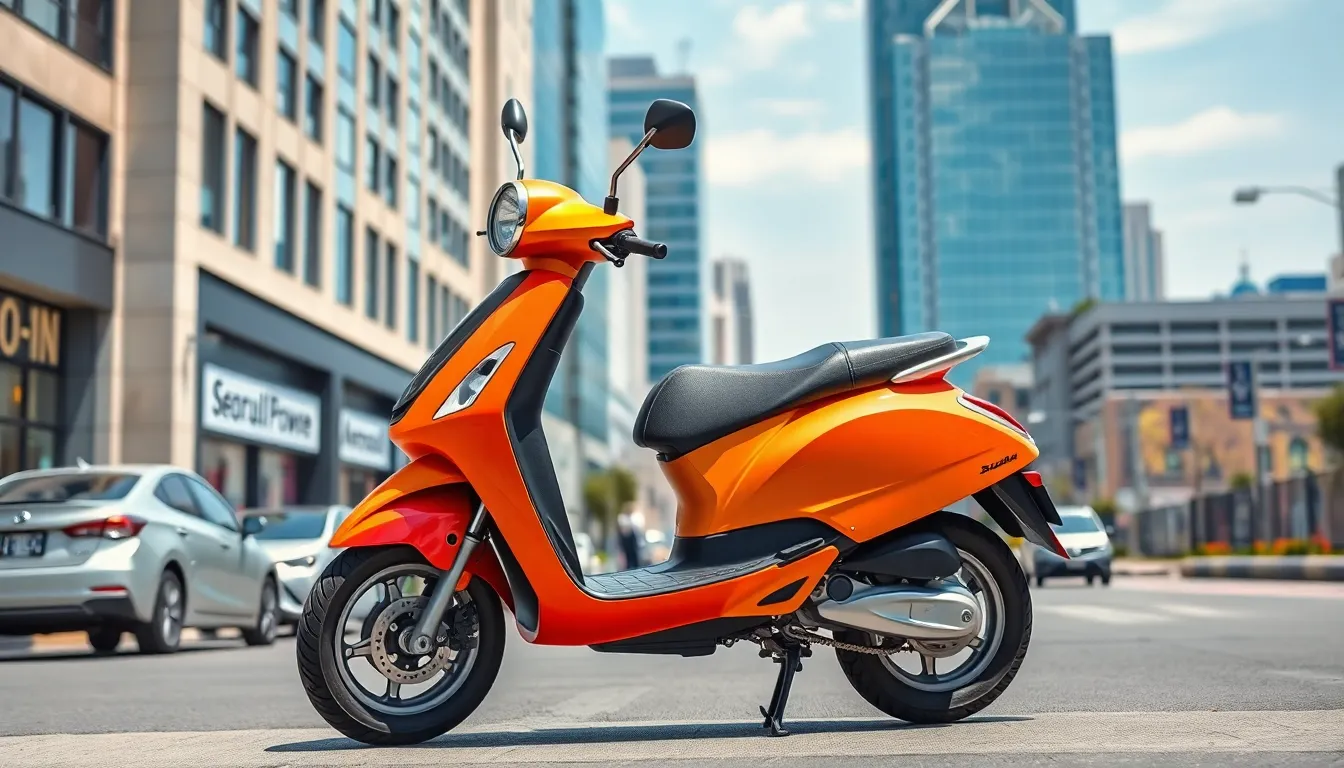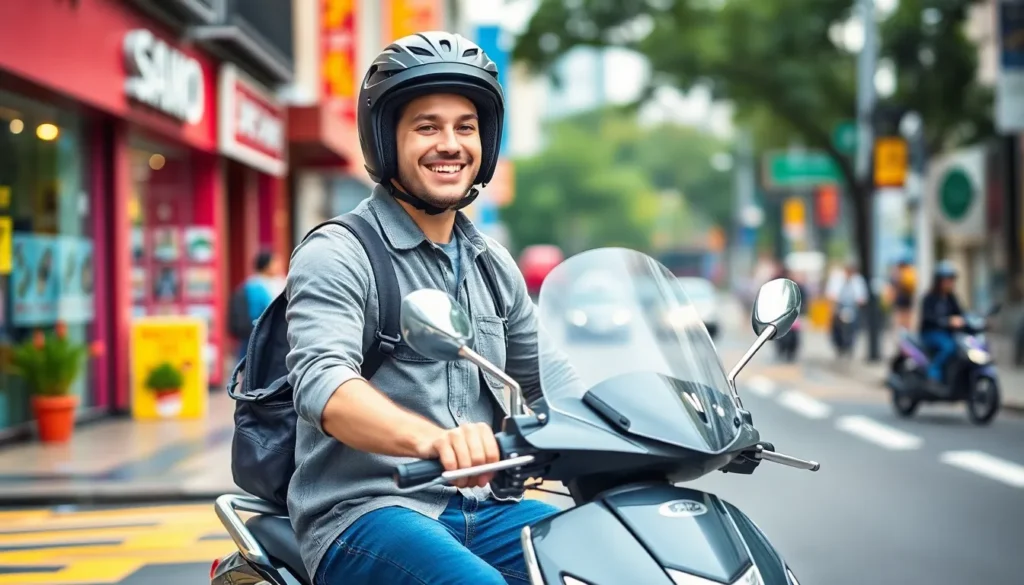Table of Contents
ToggleWhen it comes to 50cc scooters and bikes, speed isn’t just about the thrill—it’s about the journey. Picture this: zipping through city streets, feeling the wind whip past, and dodging traffic like a pro. But just how fast can these pint-sized powerhouses actually go? Spoiler alert: it’s not as slow as you might think.
Overview of 50cc Vehicles
50cc vehicles offer a unique riding experience, ideal for urban commuting or short trips. These small displacement scooters and motorcycles provide agility and speed in city environments.
Types of 50cc Vehicles
Various types of 50cc vehicles exist, including scooters, mopeds, and small motorcycles. Scooters are popular due to their step-through design and ease of use. Mopeds typically feature a combination of pedaling and engine power, appealing to those seeking a lightweight option. Small motorcycles, though less common, provide a more traditional riding experience while maintaining low speed capabilities.
Features and Specifications
Key features characterize 50cc vehicles, enhancing their appeal. Most models include automatic transmissions, making them user-friendly for riders of all skill levels. Weighing around 200 pounds, these vehicles are lightweight and easy to maneuver. Fuel efficiency often exceeds 100 miles per gallon, translating into lower operating costs. Top speeds usually range from 30 to 50 miles per hour, depending on the model and design. Many models also include under-seat storage for convenience and practicality.
Speed Factors

Factors influencing the speed of 50cc vehicles include engine performance and weight and design characteristics.
Engine Performance
Engine type and tuning directly affect a vehicle’s speed capabilities. Two-stroke engines generally provide higher power-to-weight ratios, leading to quicker acceleration. Four-stroke engines, however, may offer better fuel efficiency and smoother rides. Variables like the carburetor calibration also play a role, influencing throttle response and maximum speed. Riders can expect speeds anywhere from 30 to 50 miles per hour, depending on these engine factors. Regular maintenance, including oil changes and air filter checks, ensures optimal performance, directly contributing to speed.
Weight and Design
Weight significantly influences the speed of 50cc vehicles. Most weigh around 200 pounds, making them lighter and easier to handle. A well-designed frame helps improve aerodynamics, reducing drag while increasing speed. Design elements, such as streamlined fairings or low center of gravity, enhance maneuverability and stability at higher speeds. Compact size allows quick lane changes and agility in traffic. Each of these aspects contributes to the overall speed performance, allowing riders to enjoy both efficiency and excitement while navigating urban environments.
Average Speed of 50cc Vehicles
50cc vehicles offer notable speed capabilities, making them suitable for urban commuting and short trips. Their average speed typically falls between 30 to 50 miles per hour, depending on the specific model and type.
Comparisons with Other Engine Sizes
When compared to 125cc and 250cc vehicles, 50cc scooters and bikes provide lower speeds. While a 125cc can reach 60 miles per hour, and a 250cc can exceed 70 miles per hour, 50cc vehicles excel in agility. Composite speed and efficiency characteristics emphasize their practicality for city driving. They serve as great options for beginner riders or those seeking economical transportation.
Real-World Examples
Many popular 50cc models showcase impressive speed capabilities. The Honda Metropolitan achieves around 40 miles per hour, while the Yamaha Zuma 50F can reach 49 miles per hour. Additionally, the Vespa Primavera 50 also clocks in at about 40 miles per hour. Each model highlights distinctive features, such as fuel efficiency and compact design, appealing to riders looking for easy urban maneuvering.
Legal Limitations
50cc vehicles often face legal restrictions impacting their speed and operation. These regulations vary based on location and rider age.
Age and License Requirements
Minimum age limits for riding 50cc vehicles differ by state. Some states permit riders as young as 14 with a learner’s permit, while others require a full motorcycle license at 16. License requirements typically include completing a safety course. Knowing the specific rules in a rider’s state is crucial for compliance. In addition, some municipalities may impose local regulations that further restrict who can operate these vehicles. Riders must ensure they follow training and licensing regulations to ride legally.
Speed Restrictions by State
States impose various speed restrictions on 50cc scooters and motorcycles. Many jurisdictions limit 50cc vehicles to 30 mph or similar, especially in residential areas. In some cases, riders may face additional limitations on specific roads. Riders should familiarize themselves with local laws to navigate safely and legally. Awareness of nearby school zones or high-traffic areas helps riders adjust their speed accordingly. Understanding these constraints ensures riders can enjoy their vehicles while adhering to the law.
Exploring the world of 50cc vehicles reveals a thrilling blend of speed and practicality. With top speeds ranging from 30 to 50 miles per hour, these scooters and bikes are perfect for urban commuting and short trips. Their lightweight design and agile handling make them a popular choice for both new and experienced riders.
Understanding the factors that influence speed can enhance the riding experience. Regular maintenance and awareness of local regulations are crucial for ensuring safety and compliance. As riders navigate city streets, the excitement of 50cc vehicles truly shines, offering an economical and efficient way to enjoy the ride.





